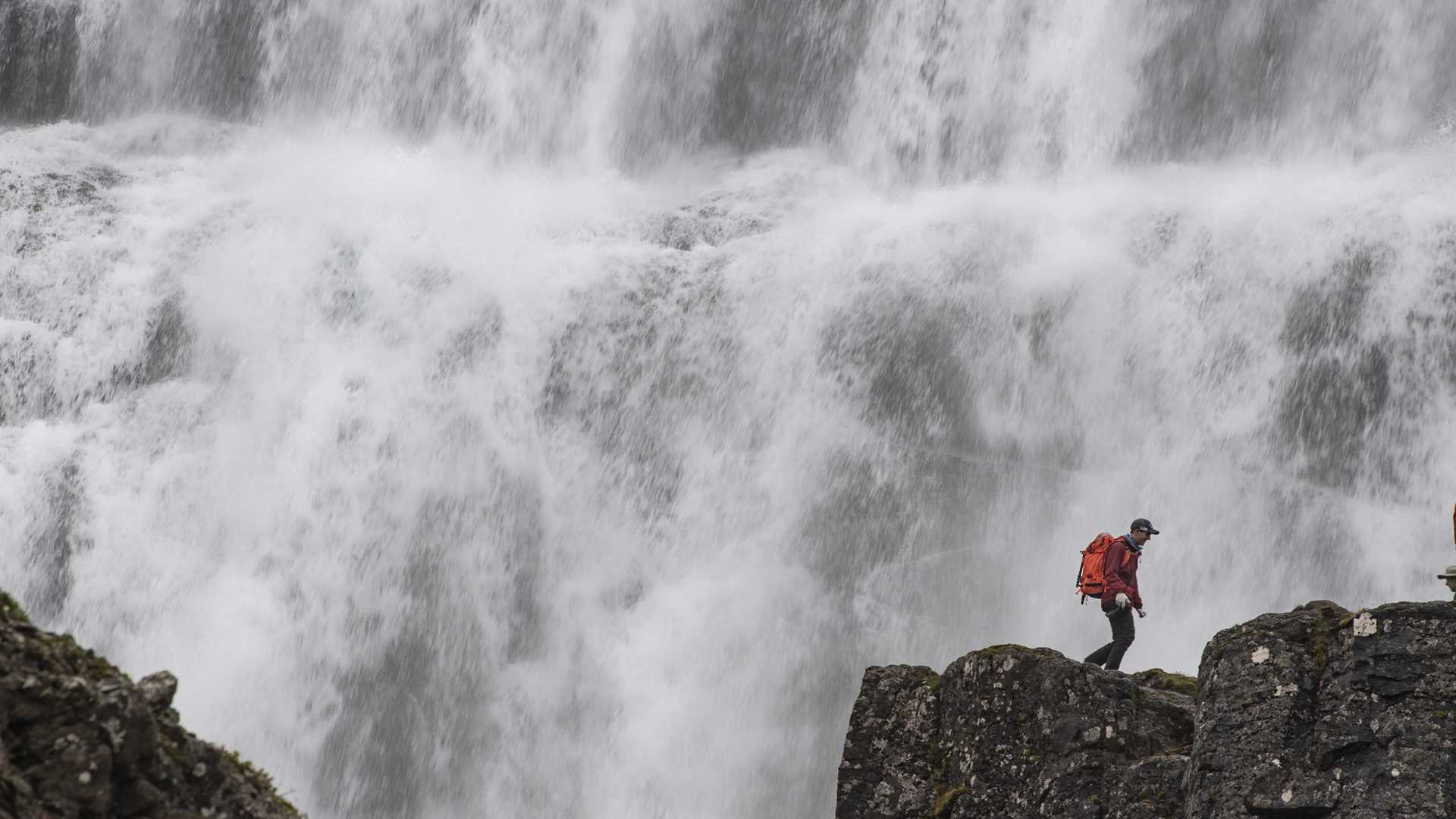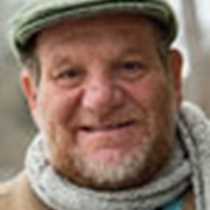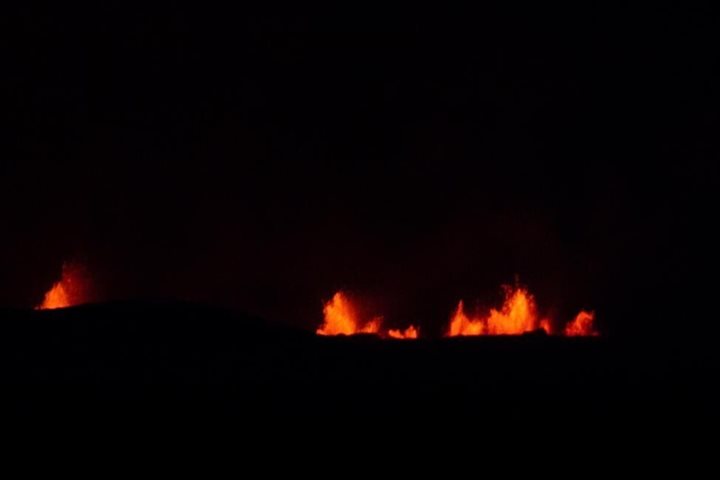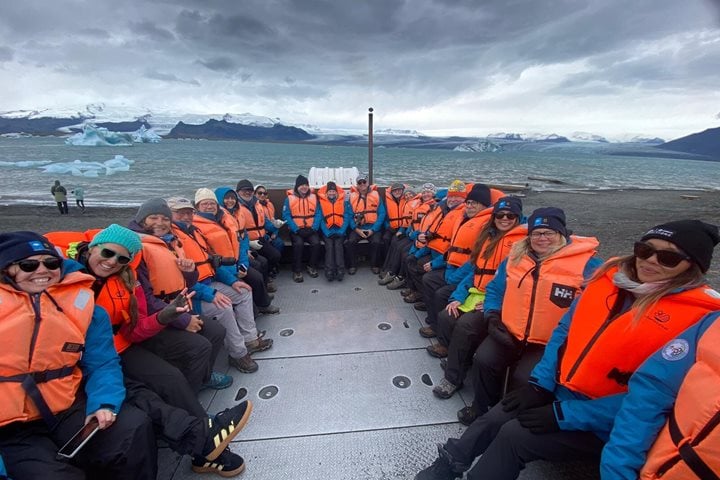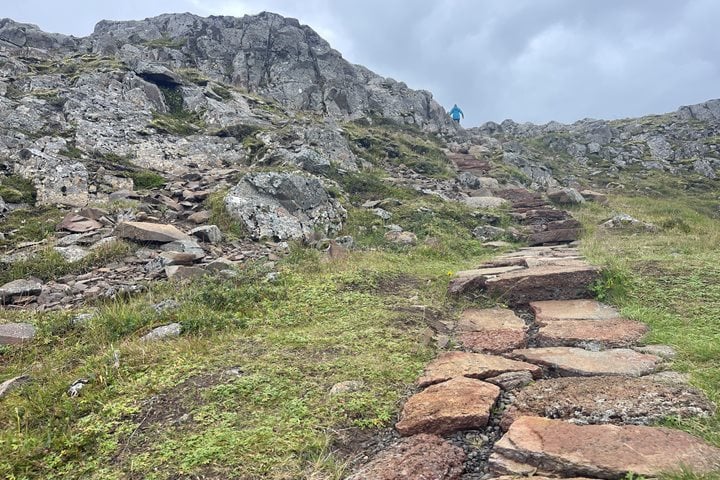There's something invigorating about being near a waterfall. I read once that the reason people feel that way is because as the water falls and strikes rocks and other surfaces, oxygen molecules are released, adding more oxygen into the air around the falls. Maybe so, but judging by the vocal expressions of the guests viewing from the deck of our ship, those molecules must have traveled far to reach us on the National Geographic Explorer. Dynjandi Waterfall may not be the biggest in Iceland, and it may not have the most water coming over its precipice, however, it certainly is one of the prettiest. Dynjandi, is actually a series of falls, one very large and wide, and three or four smaller ones that form a torrent of rushing water falling about 300 meters from top to bottom. As the water falls from one fall to the next, it releases an encompassing mist that makes the surrounding landscape a garden of lush green moss and grasses and gives life to the many wildflowers that you can find there. The trail to the top of the falls is a pavement of mud and slippery uneven rocks, but the frequent stops to view the falls along the way make the hike seem less strenuous, as we trudged our way from one photo op to the next. Time passed so quickly as we wandered up and down the circuitous route until finally, we were heralded back to the ship. A good morning had by all, we were ready for the afternoon's destination, a small island called Vigur.
Although it is only two-kilometers long, and 400-meters wide, the island of Vigur is the second largest island in Isafjordur Bay. It has been inhabited by the same family for generations, and houses the only surviving windmill in the country. All of this is interesting, however what brings us is the birds. For the family who owns and lives on the island, the most important bird found on Vigur is the eider duck, for a large part of their livelihood is based on the farming of eider down, the fine feathers used by the females to line their nests. It is the finest down known to man, and the quality of Icelandic eider down is not to be surpassed. For us on board the big attraction was not only the eiders, but also the puffins, guillemots, and the arctic terns that are found there as well. Yesterday, on the island of Flatey we had our first encounter with the clownish little puffins. And ever since we left, all of us have been excited about visiting Vigur.
With so much to see the true star of the show on Vigur were the arctic terns. Encountering the birds took on new meaning on the island. After a stop for an orientation at the base of the windmill, we ventured out along a well-maintained trail through the colony of terns. Before heading into the colony of the longest migraters on our planet, we were given sticks to hold high above our heads to give the terns something to attack other than our heads. A good thing, for as we entered the gauntlet of birds they quickly descended on us intent on driving us from the close proximity of their nest. Scary yes, but also admirable, as the terns defended their nests and young. However, even as we ducked and cowered from their attacks, we could not help but marvel at the grace and elegance of these beautiful, delicate birds.
We finished our visit with a sampling of tea, coffee, and some homemade cakes, graciously prepared for us by the family who still cares for the island as their ancestors did so many generations ago.

